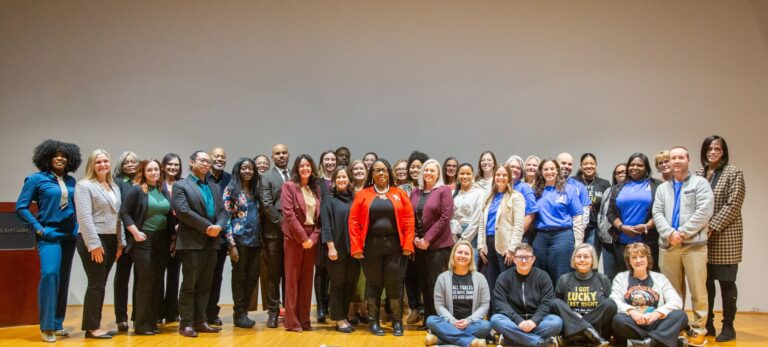In 2022, New York became the latest state to launch a Master Plan for Aging (MPA)—a multisector, comprehensive roadmap to create the conditions for all people to thrive as they age. When Gov. Kathy Hochul committed to an executive order for the Master Plan for Aging in her January 2022 State of the State address, it was a thrilling moment for our cross-state coalition of aging experts who had been advocating for the plan for several months.
Gov. Hochul’s commitment came at a critical time—in her executive order, the Governor noted the demographic reality that New York has the fourth largest population of older adults in the United States and that the “older adult population is growing faster than any other age group in the state.”
The time was right for New York to affirm that people deserve the opportunity to live healthy, thriving lives at any age, and that communities that work best for older adults tend to improve the quality of life for all residents.
Where did the momentum for New York’s MPA begin? A coalition of aging experts from across the state, led by our team at the Health Foundation for Western & Central New York, convened in late 2021 to learn about another state’s approach—California. The momentum also benefited from efforts supported by The John A. Hartford Foundation and others to expand Age-Friendly Health Systems statewide.
After generous guidance from The SCAN Foundation, which, with a collaborative of other funders, had, starting in 2019, led the call for California’s MPA, the coalition of more than 80 nonprofit organizations in late 2021 launched an advocacy campaign for New York’s plan, beginning with an open letter to Gov. Hochul.
Because we wanted to be prepared for the Master Plan for Aging’s state launch, our coalition members also collaborated on an outline of recommendations for the potential plan, called “Community Priorities for New York’s Master Plan for Aging.”
The recommendations included a list of key principles for making the plan a success, including:
- A cross-sector, equity-focused approach
- A commitment to transparency and accountability
- Regular updates on progress and challenges
- Capitalizing on existing infrastructure, such as Age-Friendly New York and the NYS (New York State) Prevention Agenda
Because the executive order was signed in November 2022, Governor Hochul’s approach to the plan’s development has strongly incorporated state leadership and community involvement.
With the leadership of the New York State Department of Health and the Office for the Aging, the state in early 2022 established a Stakeholder Advisory Committee of community leaders to help shape the MPA plans, including this article’s co-author Nora OBrien-Suric.
These efforts also are supported by subcommittees and working groups of community participants to develop recommendations on what should be included. The working group topics include Economic Security, Housing and Community Development, Long Term Services and Supports, Health and Wellness, Safety and Security, Home- and Community-Based Services and Caregivers. These groups are working toward producing a preliminary report of recommendations in summer 2023.
Our coalition made it clear from the start: community voices will be an integral component of the plan’s success. We were pleased to see the state’s recent launch of a series of town halls to ensure community input in the MPA, with the first of these meetings held this June in New York City. This town hall, held virtually and in-person at Hunter College, allowed ample time for the many questions asked by the community.
More of these opportunities are expected throughout the summer and will be essential to ensuring the plan is relevant and effective for all New Yorkers. The final Master Plan for Aging report, which will lay the path forward for the plan’s implementation, is due to be released in January 2025.
Significant work remains to make the MPA a success, but we are grateful for Governor Hochul’s dedication to creating a healthier New York for people of all ages, and to the tireless work of those who are involved in developing the plan—from the state and the community.
With a transparent, measured and thoughtful process that incorporates the input of people closest to aging issues and older adults, New York can have a Master Plan for Aging to be proud of for years to come.
We hope that more states will take on this important work. There is much that can be learned from New York and the states that came before us, including California, Colorado and Massachusetts. We were ecstatic to see our neighbors in Pennsylvania announce they are the latest state to launch their own MPA!
Let’s work together to ensure this momentum continues and the entire United States is soon committed to creating a nation where older adults are valued, healthy aging is a priority, and all people have what they need to thrive.
To Learn More About the Multisector Plan for Aging Movement
Get connected to the ASA’s MPA Future Proof Live Series. Click here to access our most recent Future Proof Live, which featured California and Vermont and demonstrated how MPAs can build bridges between agencies like Parks and Rec, libraries and city transportation services at the state and local levels. Down the page is the first Future Proof Live on MPAs, which provided an overview of MPAs across the nation, featuring speakers from California, New York, North Dakota and Tennessee.



